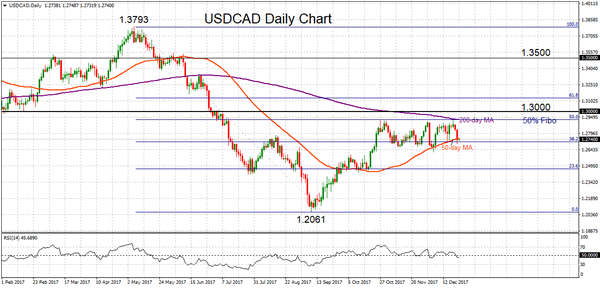USDCAD continues to move sideways in a range since late October. Near-term risk is tilted to the downside. The market is capped below the 200-day moving average and has dropped below the 50-day MA, sifting near-term risk to the downside.
USDCAD is essentially in a consolidation phase between two key Fibonacci retracement levels of the 1.3793 to 1.2061 downleg. The 38.2% Fibonacci (1.2717) and 50% Fibonacci (1.2922) levels are providing support and resistance. The market moved into a neutral phase after bouncing off a more than a 2-year low from 1.2061 in September.
It will likely be a challenge to break above the barriers between the 50% Fibonacci and the key 1.3000 level. A sustained move out of this resistance area would shift the bias to a more bullish one and improve the odds for a move towards 1.3500 and then to re-test the peak at 1.3793.
Near-term momentum is weak and RSI is falling, keeping risk to the downside but strong support is expected at the lower range between 1.2717 (38.2% Fibonacci) and 1.2623 (December 5 low). A break below this area would increase downside pressure and send prices towards the 1.2500 handle and possibly the 1.2061 low.
Overall, USDCAD has changed very little since trading in its well-established more than 2-month old range. The short-term bias is shifting to bearish while prices remain below the 50-day MA and as long as RSI remains below 50.














